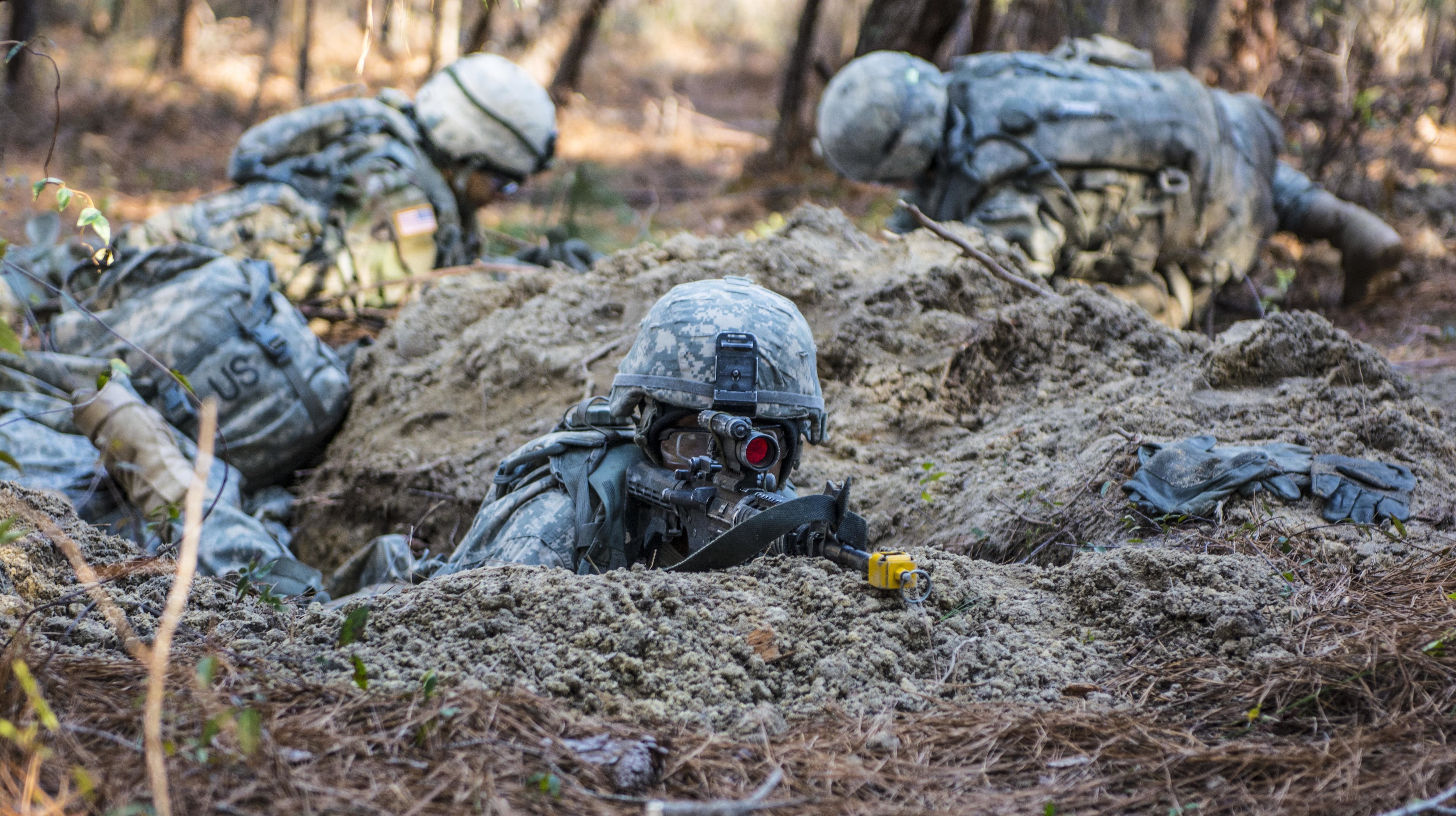Army leadership is moving full speed ahead to stand up a modernization command to revamp six weapons and equipment systems over the coming decade.
To match that effort, Army doctrine, training and personnel will require a face-lift of its own, Army Secretary Mark Esper told an audience Monday at the AUSA Global Force Symposium in Huntsville, Alabama.
“We have every reason to get this right, and far fewer reasons not to,” Esper said.

That shift will trickle all the way down to, literally, the most basic aspects of the Army.
After putting the breaks on a plan to add two weeks to basic training, the service is revisiting the idea, with an eye toward building soldiers who are ready for intense, sustained future conflicts.
“That’s why we are considering several initiatives — from a new physical fitness regime to reforming and extending basic training — in order to ensure our young men and women are prepared for the rigors of high intensity combat,” he said.
To do this, he said, the Army must also get bigger. The Army reversed its drawdown in 2017, adding tens of thousands of soldiers back into the force to fill holes across dozens of formations.
That trend is set to continue both this year and next, per the Army’s budget requests. The plan now is to grow the active force to 487,500 in the next two years.
“A decade from now we need an active component above 500,000 soldiers with associated growth in the Guard and Reserve,” Esper said.
And those soldiers will need to be trained in not only the irregular warfare of the Global War on Terrorism-era, he added, but to go against similarly trained and equipped militaries in a completely different environment.
“Our training must focus on high-intensity conflict, with an emphasis on urban operations in electronically austere environments – meaning limited comms or data – and under constant surveillance,” Esper said.
The Army is hedging against the possibility of going to war against a rising Russia or China, as well as the side effects of those build-ups.
“And even if we never face Russia and China on the modern battlefield, we should expect to see their weapons, equipment and tactics employed against us by others,” Esper said.
Those preparations are already underway, he added.
“For example, we are increasing the capability of our formations, returning Short-range Air Defense and Multiple Launch Rocket System battalions to our divisions,” he said.
But at a more basic level, the service’s culture must shift away from the bog-down of mandatory training, Esper added, putting responsibility back on junior leaders.
RELATED

“It also demands that we stop doing things at home station — much of this non-statutory mandatory training directed from above — that inhibits our readiness and lethality,” he said, and “… that we re-empower — and expect — our NCOs to train, and coach, and lead their soldiers, not relegate responsibility for these duties to online training and outside experts.”
Soldiers can expect to see more details about these plans from the secretary and the chief of staff in the near future, he added.
Meghann Myers is the Pentagon bureau chief at Military Times. She covers operations, policy, personnel, leadership and other issues affecting service members.







